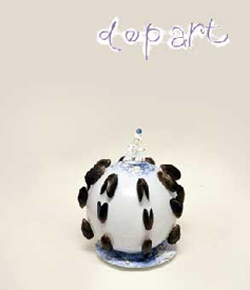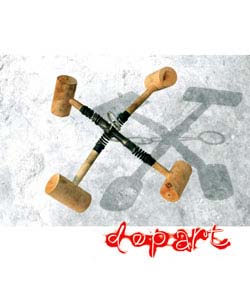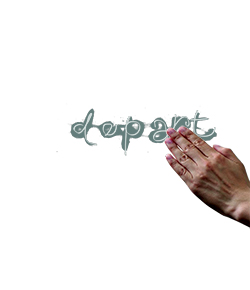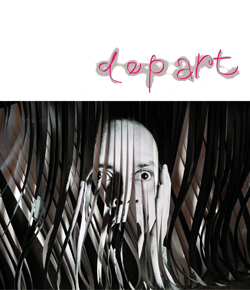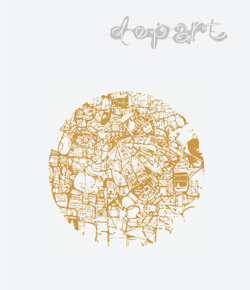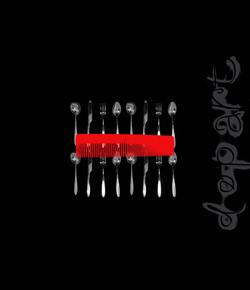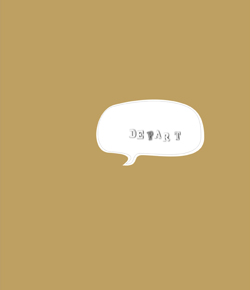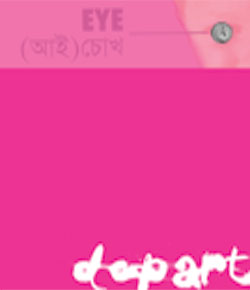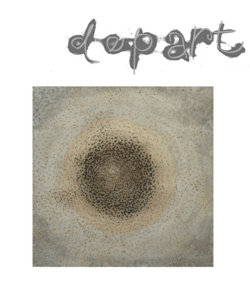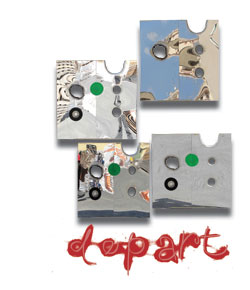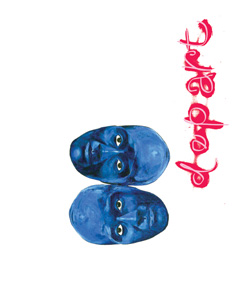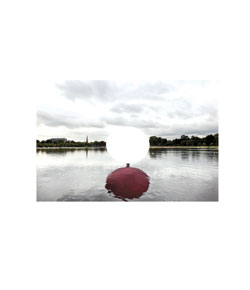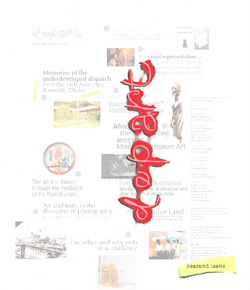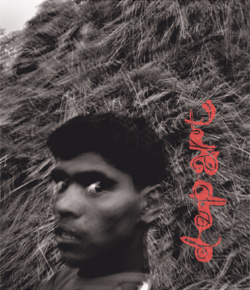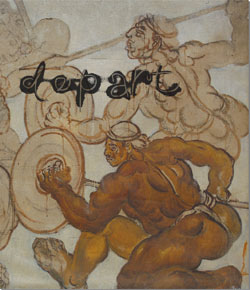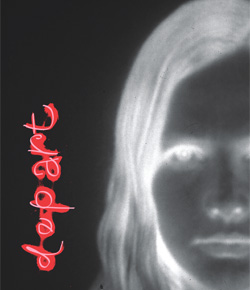Features
Moments from IAF 2015

Since 2008 the India Art Fair (IAF) has made an appearance on the South Asian art calendar with alacrity. This year was no exception. However, a certain lethargy seems to have set in of late as galleries – both international and national – mostly presented works by established names who are already known for their own idiosyncratic grooves, apart from the expected clutch of international icons ranging between Picasso and F N Souza. Not that art fairs are meant to be divergent or experimental. But somehow IAF had till recently retained an air of creative freshness and dialogue that seem to be disappearing as it matures into a regional hub.
Though the selection of iconic, near mythic names made the Fair look somewhat heavy handed in terms of contemporary art practice, the fair did have its exciting edges too. For example, Praneet Soi's works showing in multiple booths, ranging between the proven Vadehra and the frisky Experimenter, drew immediate attention to the world's changing perception of South Asian art. Soi's works were typically fragmented, the drawings in paint wrapping themselves around the edge of our troubled urban reality and disappearing unexpectedly into a dark, cavernous emptiness beyond.

Bangladesh's own Tayeba Begum Lipi was an impressive presence at the show, both with her work at the Shrine Empire booth in the fair as well as her exposition at the collateral event called Reversal Reality taking place at the gallery in the city. Her Recalling 1 (2014), a sculpture fashioned from stainless steel razor blades embodied the horror of the collapsed garment factory at Rana Plaza in Dhaka that claimed the lives of more than 1,100 workers and injured thousands more. The deadly sharp edges of the blades materially bring alive the trauma of the experience in the national psyche apart from the victims. They also offer an excruciating glimpse into the abysmal state of workers' rights in the region.
Long Walk is another one of Lipi's material reflections from the series dedicated to Anonya, a transgender in Bangladesh. Moulded around the shape of a pair of Anonya's shoes, the sculpture materialises through gold-plated, brass safety pins. Their hidden sharp points are material metaphors for the psychological scarring and obstacles that Anonya had to live through during her early years. The rest of the series deal with Anonya's life too, through video, installations and sculptures.
Playing with the materiality of the medium seems to have been very much on the minds of the two other artists from Bangladesh, whose work I ran into at IAF. Ayesha Sultana's graphite drawings on paper (Untitled Passage, 2015) at Experimenter bear witness to her relentless persistence in the act of mark-making. The marks congeal, to emerge on the other side of drawing as reflective objects in themselves, wittily punning on the protean definition of what drawing stands for. She herself calls these equivalent to architecture reminiscent of landscapes. Promotesh Das Pulak's Encapsulated 2 (2014) at Aicon Gallery's booth took forward his familiar work on gas masks enmeshed with flowers carved out of indigenous 'shola' or cork alongside high-tech computer chips – a multipronged comment on our collapsing biosphere and the onslaught of information technology.
A less subtle but nonetheless relevant take on obsessive consumerism was Vishal K. Das's mixed media sculpture Mareech (2015) that played with the mythic symbol of unavoidable allure – the demon disguised as the golden deer of Ramayana – and superimposed on it a number of classic conversations active in contemporaneity, ranging between gender-based objectification to consumerist underpinnings of globalisation. One of the most popular works at the Fair, it was displayed by Nature Morte and screamed for attention but yielded little in terms of introspection. On a similar note of grandeur hung Rahul Kumar's installation in ceramic, Circle Encircled, guarding the gateway to the VIP lounge. Exquisitely crafted discs in glazed ceramic of varying diameters immediately caught viewers' attention that got easily deflected by the facile beauty of the piece.

In contrast Anoli Perera's visually overwhelming Second Skin: Elastic Dress II unfurled into a poignant comment on the psycho-biological experience of femininity at Shrine Empire again. The monumental red dress, 'a shroud of being' as the artist calls it, traces the menstrual cycle of a woman through interconnected, sinuous elastic loops. Works in a similar vein though on a less political note, exploring the entangled nature of lived moments through metal wire mesh, beads etc. was Puneet Kaushik's solo project at Gallery Beyond. Nandita Kumar's Emotive Sounds of the Electric Wire supported as a project by Lakereen Gallery resuscitated such connections between human beings by reproducing handwritten letters through a drawing machine that scribbles out in larger formats (on paper and in ink) messages already collected by the artist in the course of the project. Every time a complex word or syntax baffles the machine's blind reproductive capacity, a blot of ink forms and Kumar treats the blots as sheet music that she will later convert into a musical piece in collaboration with musicians.
A perfect example of random inquiry and mediatic transmutation that engages new media artists today! Just as British artist Rhys Himsworth redirects computer recognition software to create composite, ephemeral portraits derived from the images of 50 people in his nearest circle, 'creating a human face through the eyes of a machine' at the Portret Project's booth. Both works, though exciting in their interrogation of random human interconnections and machine output, cease on this side of novelty and wonder.

A visit to Gallery Espace's booth was particularly gratifying, thanks to a glorious exposition of tempera-on-paper works by Nilima Sheikh that subtly encapsulate violence, longing, memory and territorialism in our collective psyche, especially in the Kashmir Valley. Zarina Hashmi's muted black and gold woodcut prints explore the same, this time through maps of the Indian subcontinent. Sri Lanka's Pala Pothupithiye's drawings and mixed media sculptures of daggers elegantly took up the same motifs but from a critical, Sinhalese perspective.
Artists' books pleasantly popped up at ‘niche’ spaces in the Fair. Dayanaita Singh's Museum of Chance-Book Objects with its ever changing permutation of 88 images and covers encompassed 30 years of her oeuvre and offered expectedly incisive pieces. More of a surprise was Sudarshan Shetty's I Know Nothing of the End, a series of 23 photo etchings that are actually stills from a film on an average Indian household. With a single sentence interspersing the images, Shetty has poignantly explored the cinematic in the everyday, displayed at a Gallery Ske space. While Amritah Sen's Project: Fear exhibited at Ganges Art Gallery delved into this dark emotion's redemptive aspects through collages and watercolour drawings culled from personal narratives in various cities, Book-3 was created in Dhaka.
The theme of manmade structures recurred throughout the Fair. Right outside the main Fair pavilion, Veer Munshi's wooden model of a toppled Kashmiri home filled with numerous portrait sketches of people affected by the recent floods, along with a video work, was a 'meditation on various kinds of loss connected with Kashmir'. At one corner, T V Santosh's wooden model of the Mumbai railway station stood tilted as well. The Victoria Terminus, now inscribed on collective memory as the site of a terrorist carnage in 2008, bore his trademark LED timers and carried with them the prophecy of an inevitable doom in a timeless loop. Both works were, interestingly, presented as special projects in the fair.

I found both Volte Arts Project and Gallery Ske's impressive showcases of sleek works of contemporary greats to be brimming with query and critique, especially Nalini Malani's video piece In Search of Vanished Blood (2012) at Volte. However, Bharti Kher's Mother and Child (2014) at Ske remains my favourite. Challenging in its inquiry into the human psyche and societal conditionings, the figurative installation was outstanding in its informed use of material and imagery as it plumbed the depths of South Asia's subconscious.
Exciting use of unconventional material for achieving familiar imagery were in abundance in the Brinkerhoff Fine Art booth from Florida – Stephen Knapp's light-based works in which rays of white light were refracted through transparent glass shards of varying density to acquire myriad splashes of colour on stainless steel panels. Though a number of international galleries were showing interesting works, but were somewhat unexpectedly limited by featuring mostly South Asian artists. The fact that IAF has just formally announced a more regional focus for its 2016 incarnation is no doubt an obvious result of this.
Alongside the exhibits, the talk series was a highlight indeed and brought the likes of Barry Schwabsky, Julian Stallabrass, Hoor Al Qasimi, Salima Hashmi, Jeremy Deller, Rashid Rana, Jitish Kallat to name a few, on a slew of incisive discussions around the contemporary practice of art around the world. This was indeed a rare opportunity for art enthusiasts of the region to catch up on the theory of artmaking. IAF's legitimacy as a regional showcase is on the rise, but one wonders whether its commercial success yet leaves a lot to be desired.
KURCHI DASGUPTA is an artist and writer based in Kathmandu. She is a regular contributor to Depart besides other international journals.
PHOTOS COURTESY : INDIA ART FAIR






